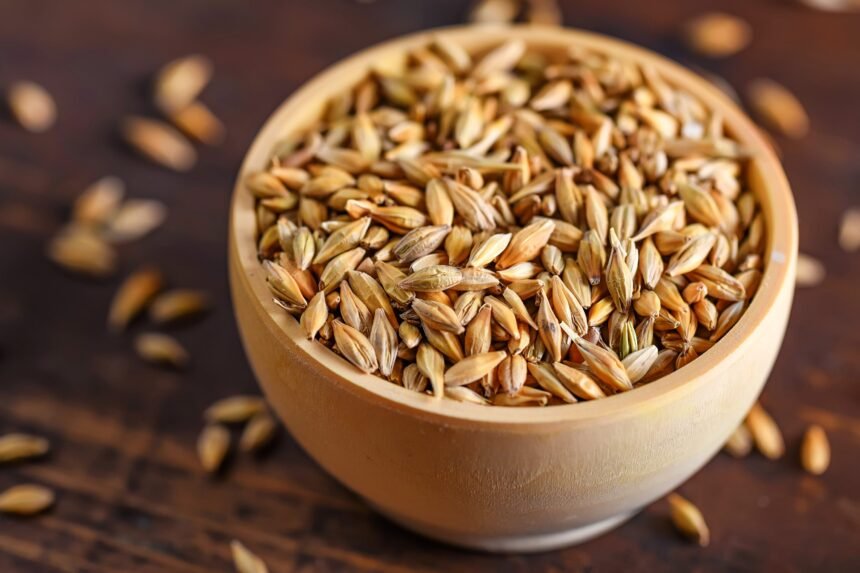Malt is a versatile ingredient that can add flavor, color, and texture to many dishes and drinks. Malt is made from grains, usually barley, that are soaked, germinated, dried, and roasted. The process of malting activates enzymes that break down starches into sugars, creating a sweet and nutty taste. Malt can be used in various forms, such as malt extract, malt syrup, malt vinegar, malted milk, and malt powder. Here are some of the most common uses of malt and how to incorporate it into your recipes.
What Is Malt?
Malt is the result of soaking grains, typically barley, in water until they sprout. The grains are then dried and roasted at different temperatures and durations, depending on the desired flavor and color. The roasting process stops the germination and caramelizes the sugars, producing a range of malt varieties from pale to dark. Malt can also be made from other grains, such as wheat, rye, oats, and corn.
What Is Malt Made Out Of?
Malt is made from grains that have undergone a process called malting. Malting involves three steps: steeping, germination, and kilning. Steeping is the soaking of grains in water for several days to initiate sprouting. Germination is the growth of roots and shoots from the grains, which activates enzymes that convert starches into sugars. Kilning is the drying and roasting of the grains to stop the germination and develop the flavor and color of the malt. The kilning temperature and time can vary from low and short for pale malts to high and long for dark malts.
What Is Malt Used For?
Malt has many uses in cooking and baking, as well as in brewing and distilling. Malt can add sweetness, richness, depth, and complexity to various dishes and drinks. Some of the most common uses of malt are:
- Brewing: Malt is the main ingredient in beer, as it provides the fermentable sugars that yeast converts into alcohol and carbon dioxide. Malt also contributes to the flavor, color, body, and foam of beer. Different types of malt can produce different styles of beer, such as pale ale, stout, lager, or porter.
- Distilling: Malt is also used to make spirits, such as whiskey, bourbon, scotch, or gin. Malt is mashed with water to extract the sugars, which are then fermented and distilled. The type and amount of malt can affect the flavor and aroma of the spirits.
- Baking: Malt can enhance the taste and texture of baked goods, such as breads, cakes, cookies, muffins, or pancakes. Malt can be added as malt extract or malt syrup to provide sweetness and moisture, or as malt powder or malted milk powder to add flavor and tenderness. Malt can also improve the browning and rising of baked goods.
- Cooking: Malt can be used as a seasoning or a sauce in savory dishes, such as soups, stews, salads, or marinades. Malt vinegar is a popular condiment for fish and chips or other fried foods. Malt syrup can be used as a glaze for meats or vegetables. Malt extract can be used to make gravy or broth.
- Desserts: Malt can add a delicious twist to sweet treats, such as ice cream, milkshakes, puddings, or candies. Malted milk powder can be mixed with milk to make a classic malted milkshake or added to ice cream to make a malted ice cream. Malt syrup can be drizzled over desserts or used to make caramel or fudge.
What Is Malt Liquor?
Malt liquor is a type of alcoholic beverage that is made from malted grains, usually barley or corn. Malt liquor is similar to beer but has a higher alcohol content (typically 5% to 12% by volume) and a lower hop flavor. Malt liquor is often sold in large bottles or cans (40 ounces or more) and is sometimes flavored with fruits or spices.
What Is a Malt Shake?
A malt shake is a thick and creamy drink that is made from ice cream, milk, and malted milk powder. Malted milk powder is a blend of malted barley extract, wheat flour, and milk powder that adds a distinctive flavor to the shake. A malt shake can also include other ingredients such as chocolate syrup,
vanilla extract,
or fruit.
Some possible continuations are:
What Is Malt Powder vs. Malted Milk Powder?
Malt powder and malted milk powder are two different products that are both derived from malted grains. However, they have different properties and uses.
- Malt powder is simply ground malted barley that has been dried
and roasted. It has a strong and bitter flavor and is mainly used for brewing or baking. - Malted milk powder is a mixture of malt powder, milk powder, and sometimes sugar or other ingredients. It has a sweet and nutty flavor and is mainly used for making desserts or drinks.
How to Cook With Malt
Malt can be a versatile and delicious ingredient to use in your recipes. Here are some tips on how to cook with malt:
- Choose the right type of malt for your dish. Pale malts have a mild and sweet flavor, while dark malts have a rich and roasted flavor. Malt extract and malt syrup are liquid forms of malt that are easy to measure and mix. Malt powder and malted milk powder are dry forms of malt that can be added to dry ingredients or dissolved in liquids.
- Use malt sparingly, as it can be overpowering if used too much. Start with a small amount and adjust according to your taste and preference. A general rule of thumb is to use 1 to 2 tablespoons of malt extract or malt syrup, or 2 to 4 tablespoons of malt powder or malted milk powder, per cup of liquid or flour in your recipe.
- Experiment with different combinations of malt and other ingredients. Malt can complement or contrast with various flavors, such as chocolate, vanilla, coffee, caramel, nuts, fruits, or spices. Try adding malt to your favorite recipes or creating new ones with malt as the star ingredient.









